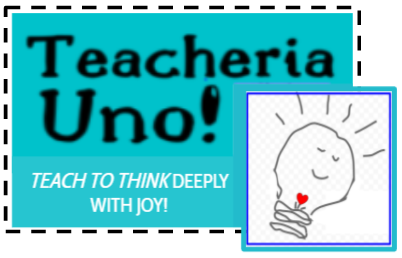Let’s Teach to Think Deeply with Joy
Hi teacher friends! I’m sitting here contemplating the daunting task of teaching grammar to my 3rd graders. Ooof! Right?!
Well, for the past few years I’ve been in full swing to improve my ELA instruction. Making it more engaging. More meaningful. More connected between the four — reading, writing, speaking, listening. And guess what?! I am starting to LUV teaching grammar, too! Here’s my why and how…
What Is It That Ya Mean?
Reading and writing is simply communication. Writers convey their thinking, and readers understand the writer’s message. Language skills. Communication, just like speaking. Our reading and writing skills develop the way as our speaking does — with lots of practice, practice, practice.
So, I wonder, why don’t we teach reading and writing (and grammar and spelling) the same way we support young kids when they are learning how to speak? I wondered, then set out to create authentic opportunities for my students to practice all of their language skills. Emphasis communication. And, then, practice, refine. And practice, refine. Hear me out…

Remember When?
It’s been a while, but when we were toddlers just learning how to talk, our caring caregivers encouraged us with every syllable — clapping for our “dah-dahs“, and modeling with glee the longer sentences we couldn’t say yet. They had every expectation that our little language would come, and no expectation that it must be perfect to be considered worthy. We learned to speak by practicing in authentic experiences, motivated by our desire to share our own wants and needs with someone else. We applied new skills every day, because we were rewarded by the every growing realization that we were getting our point across.
Enter reading and writing instruction. For some reason, we caring teachers change our minds about how to teach reading and writing — we develop routines to teach these communication skills starting with the skill, not the communication. Instead of providing daily, ongoing authentic experiences in reading and writing, and becoming gleeful when our students make (and use!) their own discoveries of reading strategies and writing conventions, we tend to focus on the skill, expecting students to memorize the rule first and then accurately apply it on a worksheet or quiz.

Sooo… How do we get kids engaged with grammar? Enter, mentor sentences! You can carefully select a prime sentence from a beloved book that you and your class have already read together and use it throughout the week to explore the grammar and syntax the author has used. This routine is so motivational because it engages kids and makes the grammar meaningful! I use mentor texts every day across all content areas, and choose a mentor sentences from them that model the writing strategies, skills, and grammar concepts we are learning. My kids beg for more!
Developing a Mentor Sentence routine that works for your teaching style and classroom schedule may take some time. But it is so worth it when you and your students share the joy. So, check them out! Try one today! Pick a sentence from one of your beloved texts and have a go! Or, click on the image below to link to my Mentor Sentence Journals resources. Let me know what you think! Let’s teach to think deeply with joy…

📚✏️❤️ Susan

